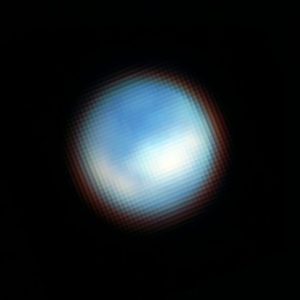NASA’s James Webb Space Telescope finds carbon source on surface of Jupiter’s moon Europa
NASA’s James Webb Space Telescope has detected the source of carbon dioxide on the surface of Jupiter’s moon Europa, located 390.4 million miles away from Earth. The presence of essential elements like carbon on the moon’s surface was uncertain until now.
Astronomers used data from the Webb Space Telescope to identify carbon dioxide in a specific region called Tara Regio on Europa’s surface. The finding suggests that this carbon likely originated in the moon’s subsurface ocean rather than being delivered by external sources like meteorites.
Interestingly, the carbon was deposited relatively recently in geological terms, indicating that the moon’s interior is still active.

Samantha Trumbo of Cornell University, the lead author of the second paper on this discovery, said, “We now think that we have observational evidence that the carbon we see on Europa’s surface came from the ocean. That’s not a trivial thing. Carbon is a biologically essential element.”
The Webb finding is groundbreaking for several reasons.
First, it provides fresh data for understanding the potential habitability of Europa’s ocean. Carbon is a fundamental building block of life on Earth, and its presence on Europa suggests the possibility of life-sustaining chemical reactions occurring beneath its icy shell.
“On Earth, life likes chemical diversity – the more diversity, the better. We’re carbon-based life. Understanding the chemistry of Europa’s ocean will help us determine whether it’s hostile to life as we know it, or if it might be a good place for life,” said Geronimo Villanueva of NASA’s Goddard Space Flight Center in Greenbelt, Maryland, lead author of one of two independent papers describing the findings.

Second, the carbon’s relatively recent deposition suggests that Europa’s subsurface ocean is still active, which raises intriguing questions about the moon’s geology and the possibility of hydrothermal activity. This could create environments conducive to life, as we have seen in Earth’s deep-sea hydrothermal vents.
NASA’s Europa Clipper spacecraft mission, scheduled for launch in October 2024, is expected to become significant in further investigating the habitability of Europa. The spacecraft will conduct close flybys of the moon, collecting essential data to confirm the presence of an ocean, assess its composition, and search for signs of plumes or other geologic activity.
One of the key debates among scientists has been the extent to which Europa’s ocean connects to its surface. The discovery of carbon dioxide concentrated in Tara Regio, along with previous evidence of ocean-derived salt in the same region, strongly suggests a connection between the ocean and surface. This connection could provide astronomers insights into the composition of Europa’s ocean without the need to drill through its icy crust.
While this discovery is a significant leap forward, it also opens up new questions. For instance, researchers have been searching for evidence of water vapor plumes erupting from Europa’s surface, which could provide direct access to the moon’s subsurface ocean. While previous observations suggested plume activity, the Webb data did not detect any plumes during its observations. However, scientists acknowledge that plumes may be intermittent and may require further investigation.
“There is always a possibility that these plumes are variable and that you can only see them at certain times. All we can say with 100% confidence is that we did not detect a plume at Europa when we made these observations with Webb,” said Heidi Hammel of the Association of Universities for Research in Astronomy, a Webb interdisciplinary scientist leading Webb’s Cycle 1 Guaranteed Time Observations of the solar system.
Despite the short period of time, according to Hammel, significant scientific achievements were accomplished, indicating the potential for amazing solar system research with the enigmatic Webb Telescope in the future.
The James Webb Space Telescope, a collaborative effort involving NASA, the European Space Agency (ESA), and the Canadian Space Agency, is the world’s primary space science observatory. It explores our solar system, studies distant planets around other stars, and investigates the mysteries of the universe’s structure and beginnings.
Auto Amazon Links: No products found.


